Your Definitive Guide to Marketing Automation
Chances are you have heard of the term marketing automation, which is no surprise considering 51% of all companies are now using this technology. But maybe you are still unclear on exactly what it is – that’s okay.

What is Marketing Automation?
Marketing automation is a software platform that exists with the goal of executing marketing actions (i.e publishing social media posts, sending out emails, and updating contact info) without any manual effort.
These systems gather all of your campaign, contact, email, and web page data into one organized area for easy access. You can also post to multiple social media accounts from their platforms and create fairly detailed web pages from ready-to-build templates.
Why should I use marketing automation?
That’s simple, because marketers who use it generate more leads, sales teams who use it close more deals and businesses who use it reap the revenue benefits. Here’s the proof (for those who love stats):
-
Best-in-Class marketers are 67% more likely to use a marketing automation platform and see 14% overall growth in marketing revenue (Aberdeen).
-
Companies using marketing automation see a revenue growth rate that is 3.1% higher than non-users (Aberdeen).
-
Nearly two-thirds (63%) of the “very successful” use their marketing automation systems extensively (Three Deep & Ascend2).
Why is Marketing Automation important?
As marketers we often feel pulled in a million different directions and our to-do list never seems to get any shorter. After all, you still only have 24 hours in a day to accomplish everything you need to get done. This is precisely the reason why the marketing automation industry is growing so rapidly. Marketing automation tools provide sales and marketing benefits that marketers could have only dreamt about 10 years ago.
By simplifying routine organizational and marketing tasks, marketing automation effectively eliminates repetitive manual processes by substituting automated solutions - saving you time and precious cognitive resources. But that's not all! In addition to increasing productivity, with marketing automation you can:
- Gather and report on data easily
- Reach customers in a personalized way across multiple channels
- Ultra-target customers at scale
- Manage leads and pass them seamlessly from Marketing to Sales
- Predict customer needs and decisions
- And much more!
If you are still on fence about investing in marketing automation, or just need to sell it to your boss, check out the resources in this section.
Diagram: Marketing Automation workflow
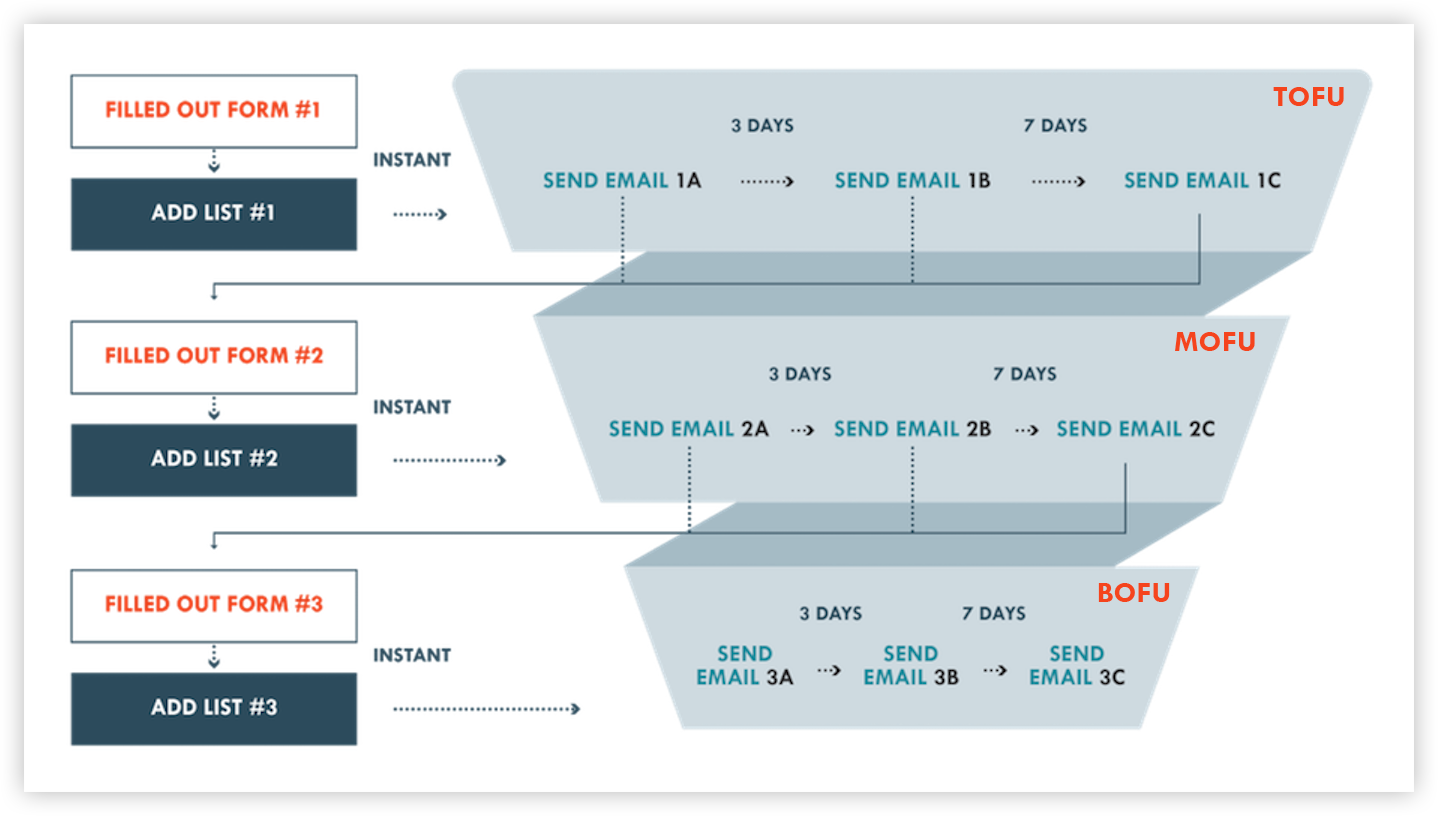
Definitions
Behavior-Based Marketing Automation: Behavior-based marketing automation (otherwise known as behavioral marketing) refers to a system that triggers emails and other communication based on user activity on and off your site. It enables marketers to nurture leads and send them information only when it is most relevant to their point in the buying cycle.
Closed-loop marketing: The practice of closed-loop marketing is being able to execute, track and show how marketing efforts have impacted bottom-line business growth. An example would be tracking a website visitor as they become a lead to the very last touch point when they close as a customer.
Cross-platform marketing automation: refers to the ability of your emails to display well across different platforms like tablets and mobile devices. If you fail to optimize for mobile, you miss out on a huge opportunity to communicate with potential customers.
Drip marketing: A communication strategy that sends, or "drips," a pre-written set of messages to customers or prospects over time.
Lead nurturing: The act of educating a lead and moving them through the stages of your company’s customer lifecycle, improving the quality of that lead over time. Lead nurturing is about building trust and reciprocal relationships with your prospects to the point they become paying customers.
Lifecycle Stages: A lifecycle stage is a way to categorize your entire database of contacts based on where they’re at in the sales funnel. The lifecycle stages are often subscriber, lead, MQL, SQL, opportunity and customer. A lifecycle stage should determine how you interact and communicate with each contact.
Workflow/Automated Program: A series of automated trigger-based actions configured on the marketing automation system. These actions, ranging from sending emails to updating contact lists, are programmed to trigger based on user behavior.

How to sell Marketing Automation to a skeptic
You only have so much time in your day to accomplish everything you need to get done. But what if there was a way to save time, target effectively, and increase your revenue?
Read blog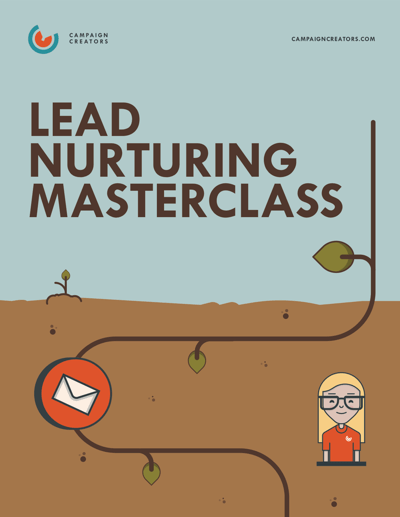
Marketing Automation for Lead Nurturing
With around 49% of companies and 55% of B2B businesses currently using marketing automation, the demand for automation software has been growing at an impressive rate over the past several years.
Read lesson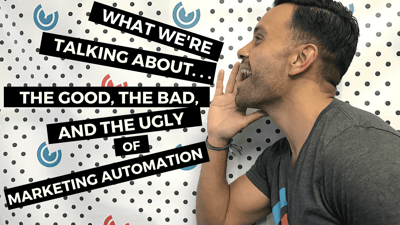
Why Use Marketing Automation?
Marketing automation has changed the way leads are generated and nurtured, there's no doubt about it.
Read blog
What We're Talking About. . . Workflow Automation
We all know time is money. In fact, most businesses are deadline driven, which means that the faster tasks get done, the more things will be accomplished, and the greater your ROI will be.
Read blogTechnology Consulting
Achieve your business goals quickly and efficiently with the right tools and technology.
View servicesMarketing Automation tools
The birth of marketing technology happened sometime in the 80’s, when computers became powerful enough to store large volumes of customer information. In 1986, ACT! developed the first ever database marketing software, basically a primitive CRM platform.
In years since, numerous marketing automation platforms have emerged with better UIs and more sophisticated features. Marketing automation tools can be organized into the following types of software:
- Customer Relationship Management Software
- Email Marketing Software
- Marketing Automation Software
- Social Media Marketing Software
- Marketing Analytics Software
Most automation tools in the marketplace fall into one of these categories, however, there are also many all-in-one platforms, such as HubSpot and Infusionsoft.
The wide availability and increasingly lower cost of marketing automation tools has led to a new conundrum for marketers - figuring out which tools you actually need and who the best provider of those tools are? Lucky for you the resources in this section are here to help you put together the perfect stack of marketing technology tools for your business.
Diagram: Marketing Technology Stack

Definitions
API (Application Programming Interface): A specific set of “rules” (code) that software programs can follow to communicate with one another.
Automation Rules: Automation rules allow you to perform certain marketing and sales actions within your automation system, like sorting leads into different lists, based on criteria that you specify.
Behavioral Data: This is behavioral data that a marketing automation platform tracks such as emails opened, pages visited and webinars attended.
Contacts: Contacts are everyone in your marketing automation database. Each of these contacts will have a different lifecycle stage.
Demographic Data: This is the demographic data for your contacts collected by a marketing automation platform such as company, job title and location.
Known Visitor: A known visitor is someone who has visited your site with an email address associated to their IP address because they’ve filled out a form or opened/clicked an email you sent them and your platform started tracking them.
Marketing Technology Stack: A grouping of technologies that marketers leverage to conduct and improve their marketing activities. The essential components of this stack are a content management system (CMS), advertising technology, email, insights and analysis, and experience optimization.
IP Address (Internet Protocol Address): A number assigned to each device participating in a computer network that uses the Internet Protocol for communication. Most marketing automation systems recognize the IP addresses of website visitors to potentially identify anonymous visitors.
Personalization: Personalization or dynamic content refers to the ability to customize what each visitor to your site sees by using their demographic or behavioral data to swap out things like cover images, downloadable guides and more.
Smart List/Segment/Dynamic List: A smart list is a dynamic list that automatically adds contacts to it based on criteria you set out.
Trigger/Entry point: A trigger is where an automation starts, based on certain actions, like adding contacts to a particular list, sending out an email and even based on actions taken by a contact or a group of them.
Unknown Visitor: An anonymous visitor is someone who has visited your site but your marketing automation database does not have an email address to associate with their IP address.
Workflow/Automated Program: A series of automated trigger-based actions configured on the marketing automation system. These actions, ranging from sending emails to updating contact lists, are programmed to trigger based on user behavior.

Which Marketing Automation system is right for you?
With 200+ marketing and email automation platforms available today, how do you know which one is perfect for your company?
Download the guide
Klaviyo: Here's Everything You Need to Know
When it comes to email marketing, online store owners can benefit from using a platform that is dedicated to their eCommerce marketing success, which is why we want to explore the benefits of Klaviyo.
Read blog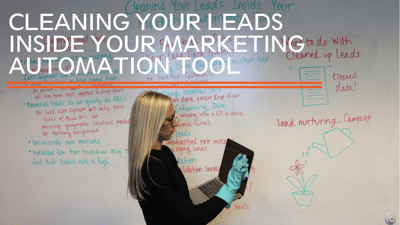
Cleaning Your Leads Inside Your Marketing Automation Tool
Generating leads is only the first step for any modern marketer. Marketing automation tools are making marketers more efficient.
Read blogEmail Automation
Despite being one of the oldest forms of digital marketing, email marketing still provides the best ROI in the business. So it should be no surprise to learn that it’s also the most widely used digital marketing channel. However, one of the main issues with email marketing is scalability, which is where email automation comes into play.
Email automation software allows you to automate the messages you send to contacts, whether they are trigger-based (initiated by a behavior of the email receiver) or an email blast (triggered by the email sender). This allows for the large-scale distribution of personalized messages to your contacts.
Because email automation works on a basic trigger and action system (i.e., when a specific trigger happens, send this specific email or set of emails) you are really only limited in what you can do by your creativity and business needs. Just a few of the ways you can use email automation to grow your business are to:
- Welcome new blog subscribers - Thank contacts for subscribing, remind them what they'll get out of reading your blog, review their subscription settings, and promote your blog's best-performing articles or other offers.
- Nurture leads - If a contact has downloaded several top-of-the-funnel offers like ebooks, help them advance further down the funnel with emails containing more middle-of-the-funnel content like case studies, free trial offers or product demos.
- Onboard/Welcome new customers - Start off your new customer relationship on a positive note and keep your customers engaged after they buy. And if your product or service requires a little training on your customers' part introduce them to helpful training materials on an incremental basis.
- Re-engage inactive contacts - Reawaken inactive contacts by sending them an exclusive offer or coupon to get them excited about your company again.
- Turn abandoned carts into sales - Remind people of their forgotten purchase and motivate them to complete the transaction by offering a special discount code or some other incentive to buy.
And that list is just a start - the possibilities for email automation are almost endless. The resources in this section are here to help you get started and refine your email automation strategy.
Diagram: Email Automation Workflows

Definitions
Abandoned cart emails: Automated email reminders sent to customers who exit a website after adding items to their shopping cart but failed to complete the purchase.
Drip emails: A series of automated emails dripped to customers or prospects over time on specific timelines.
Journey / Email Flow: Every automation you start should be goal oriented, so a flow is what you would layout as the stages or steps your automation would take to reach a specific goal
Triggered email: Automated emails that are triggered based on specific events, such as an action taken (or not) by a website visitor, or a meaningful change in a customer's behavior or profile.
Segmentation: Selecting a target audience or group of individuals for whom your email message is relevant. A segmented list means a more targeted and relevant email campaign, thus a higher response rate and less unsubscribes and spam reports.
Subscriber: A subscriber is someone who has opted-in to receiving email communication from you, but has yet to fill out a form with more information.
Welcome email series: A series of automated emails new subscribers get as soon as they sign up for your email list.
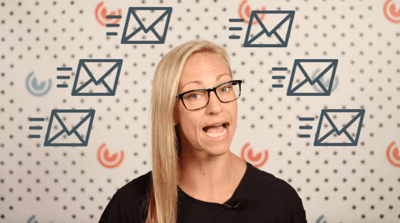
10 Compelling Reasons You Need Email Automation
Anyone who has manually managed an email campaign, knows that staying on top of all of the related tasks like updating contact information and scheduling can be a nightmare.
Read blog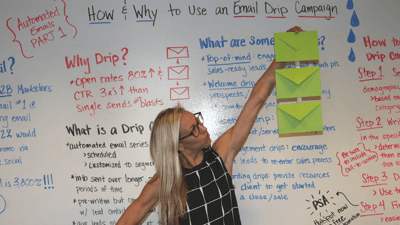
When to Use a Drip Campaign vs Nurture Campaign
As every statistics-scouring marketer knows, email is alive and thriving.
Read blog
3 Effective Tactics to Boost Email Marketing Conversion Rates
Here are 3 proven tactics from decision science you can easily implement to significantly increase your email open and click through rates right now.
Read blog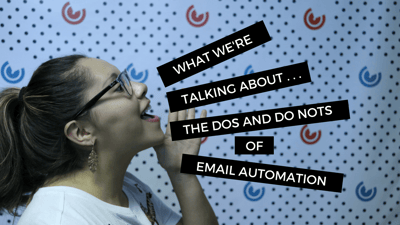
What We're Talking About. . . the Dos and Do Nots of Email Automation
Ahhhh email automation, you help us marketers so much. You save us time, effort, and make sure our contacts receive the right info at the right time. Or do you?
Read blogHubSpot Marketing
With its cloud-based, all-in-one marketing software platform, HubSpot helps companies of all sizes create a web presence, convert online traffic into leads that can be tracked and nurtured and analyze business metrics to ensure marketing campaigns are progressing in the right direction.
What can HubSpot do?
More like, what cant it do? HubSpot offers a full stack of products for marketing, sales, and customer relationship management that are powerful on their own, but even better when used together.
HubSpot Marketing helps you prepare and optimize attractive content, and distribute it among the right audiences. The built-in search engine optimization tool helps you improve search rankings for web pages to attract more qualified visitors to your site. HubSpot then allows you to create engaging calls-to-action and personalize messaging to meet the specific needs of your visitors in order to foster a successful lead generation strategy - no coding required!
At the same time, HubSpot Marketing’s contact forms and lead scoring help you decide which visitors have the genuine potential to become qualified leads, and which leads are most likely to become customers. But it doesn't stop there. The system enables you to provide qualified leads with a personalized path to purchase through automated email outreach, then report on your strategy’s impact and contribution to sales.
How does HubSpot stack up to the competition?
Despite great offerings from software like Marketo, Pardot, and Act-On, HubSpot continues to rank higher across various independent review websites.
- #1 in Marketing Automation by G2 Crowd Grid
- Highest Rated Marketing Automation by TrustRadius
- #1 in Marketing Automation by VentureBeat Marketing Automation Index
HubSpot Marketing has specifically been praised for delivering reliable and in-time support. You can reach their experienced and knowledgeable team of marketing professionals via live chat, email, or phone (depending on the plan you’ve chosen); or look up solutions independently using the platform’s vast resource and study library. They also offer a variety of certifications available free for users.
Need a little help configuring a HubSpot product? Want to make the most of your HubSpot investment? We’ve got both the resources and personal expertise to get you on track and making the most of your tools. Check out these helpful resources below.
Diagram: G2 crowd Marketing Automation

Definitions
Campaign: Campaigns in HubSpot allow you to associate related marketing assets so you can easily measure the progress and results of your collective marketing actions.
Smart List: A list of contacts that is dynamic, meaning that it automatically adds new contacts who meet the criteria to the list even after the list has been created for the first time.
Static List: A snapshot of a group of contacts who meet a certain set of requirements at a certain time thats does not update as new contacts meet the criteria.
Workflow: A workflow is an automated set of marketing and/or sales actions that execute based on a starting condition. The tool allows for multiple actions to execute at desired intervals and also includes the ability to use branching logic to perform specific actions based on how a contact has interacted with your content or website.

HubSpot Onboarding and Setup
Get up & running on HubSpot with the help of our Certified HubSpot Experts.
See services
Master HubSpot Implementation for Enterprise Growth
Implementing a CRM system might seem daunting, especially when you’re a large organization juggling multiple departments, various tools, and an extensive customer database.
Read blog
Pro tips for effortless HubSpot implementation
HubSpot is a powerhouse, combining CRM, marketing, service, sales, operations, and other tools into one ecosystem. However, setting it up can feel overwhelming.
Read blog
Oops! Avoid These Common HubSpot Onboarding Mistakes
HubSpot onboarding can be a game-changer for businesses looking to elevate their marketing, sales, and customer service efforts.
Read blogSales Automation
A recent study showed that reps spend less than a third of their time actually selling - compared to a full 50% spent between administrative CRM tasks and searching for content. So how can we flip this stat so our sales reps actually spend their time selling?
You guessed it. With automation!
Sales automation software takes the manual, time-consuming tasks sales reps, managers, and leaders do on a daily, weekly, or monthly basis and automates them. Not only does it improve efficiency, but it increases accuracy and accelerates the sales process.
Sales automation can help you become more effective and efficient at:
- Prospecting
- Qualifying and prioritizing leads
- Following up on leads
- Enriching lead data
- Managing your sales pipeline
If you're ready to stop administrating and start selling, these resources are for you.
Diagram: Inbound Sales Methodology

Definitions
Customer Relationship Management (CRM): A set of software programs that let companies keep track of everything they do with their existing and potential customers.
Lead scoring: Ranking prospects on a scale (based on attributes, behaviors, etc.) that represents their perceived value as a lead. The scores are used to prioritize the company’s engagement with the most valuable leads.
Opportunity: Opportunities are contacts who have become a real sales opportunity in your customer relationship management (CRM) database.
Pipeline Management: A cross-project management tool that systematically tracks open sales opportunities as they move through your sales process.
Sales Qualified Lead (SQL): A lead that has been determined to have the ability to purchase your company’s products or services. A sales qualified lead is then passed from the marketing team to the sales team to hopefully be closed into a customer.

4 Sales Activities You Should Be Automating
Some of the greatest value of marketing automation comes from combining CRM and marketing data to help your sales team focus on leads that are actually ready to buy and close the deal.
Read blog
Lead Nurturing Campaign for B2B
Learn to create a lead nurturing campaign specifically for the realm of selling business-to-business (B2B), where you are typically dealing with longer sales cycles, multiple decision makers, and more complicated products.
Read blog